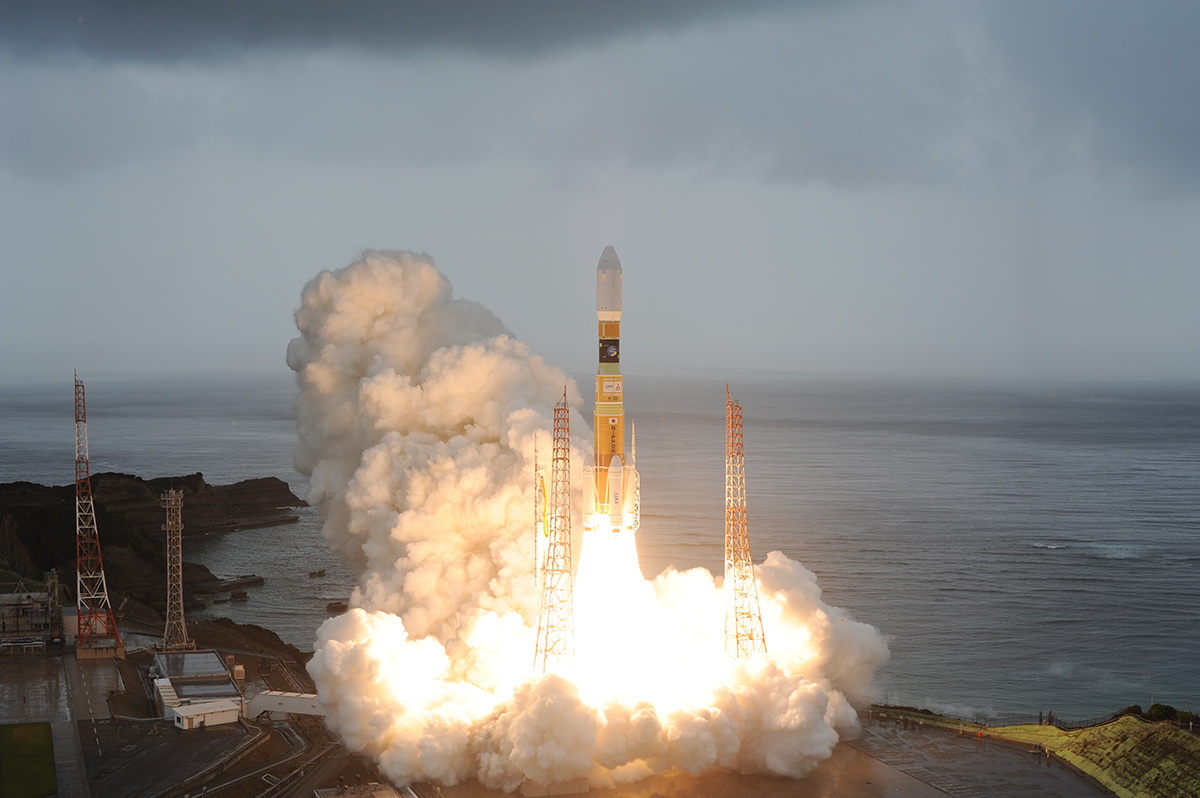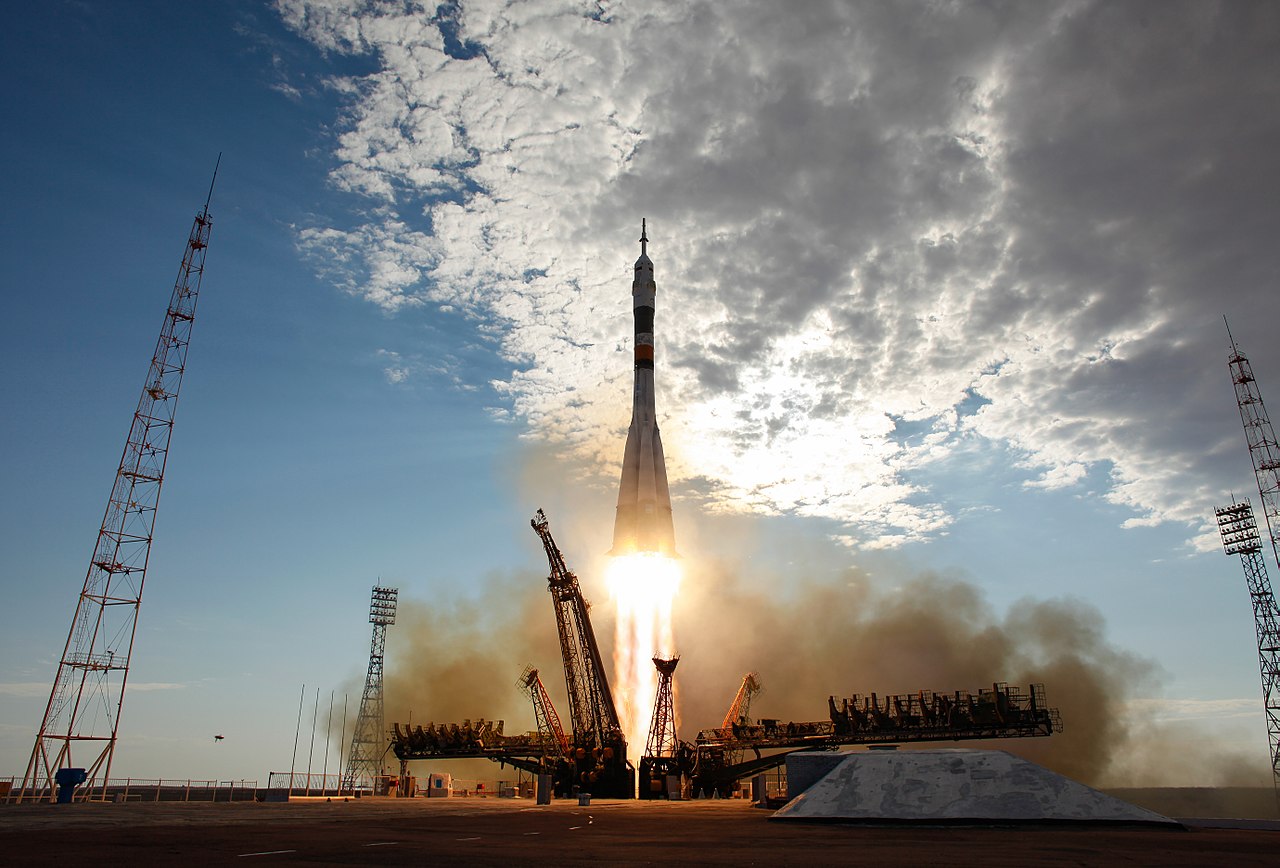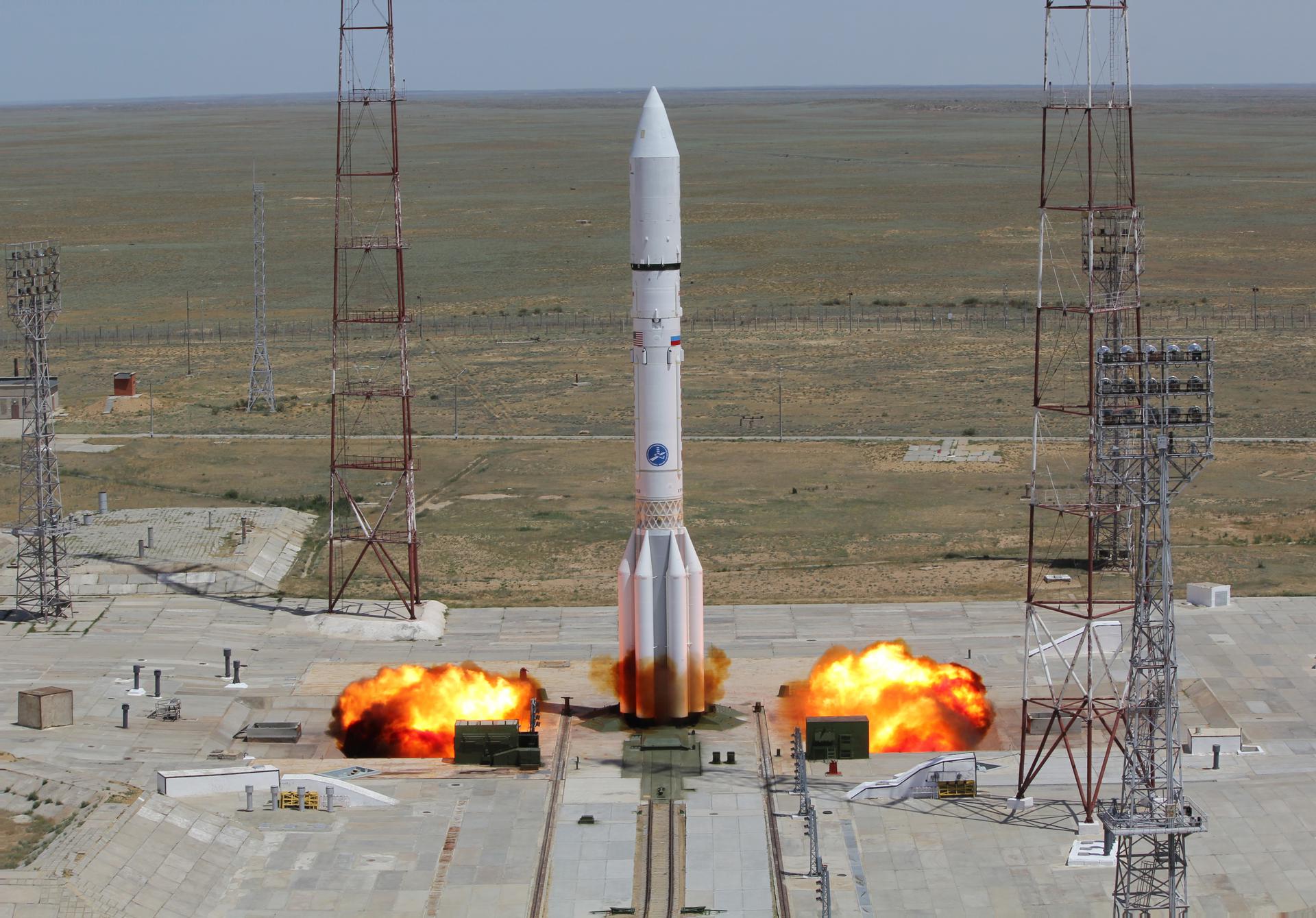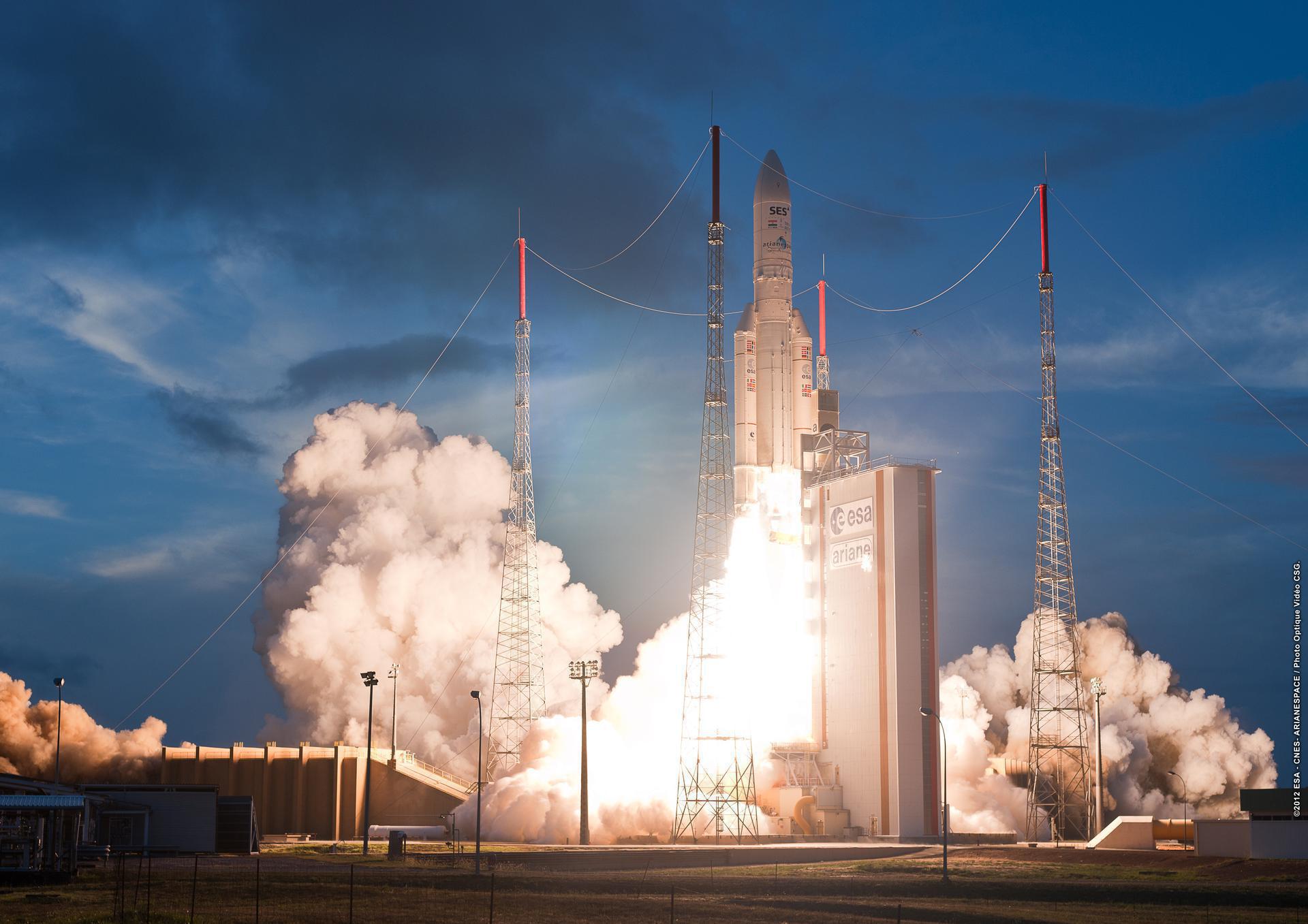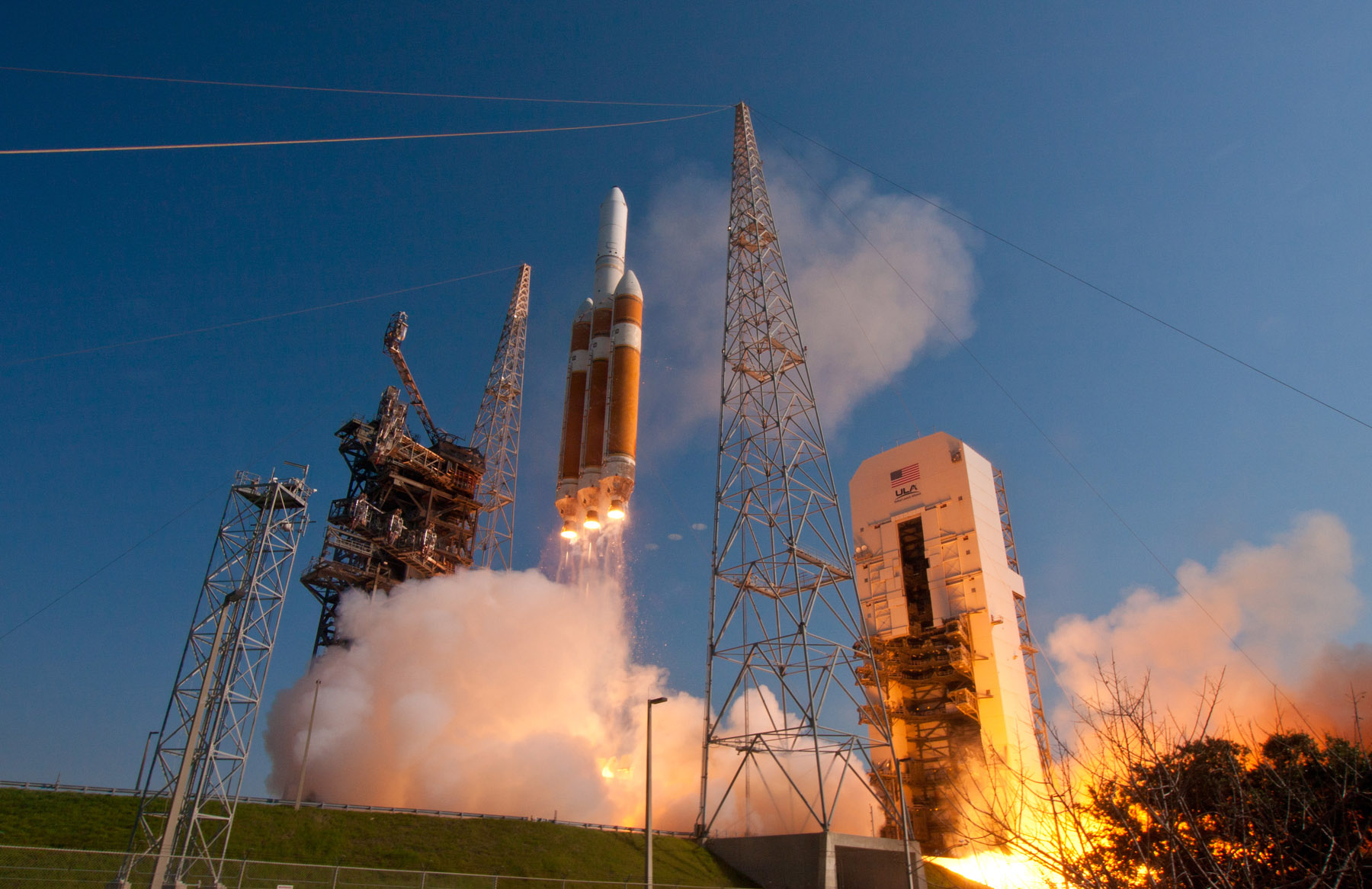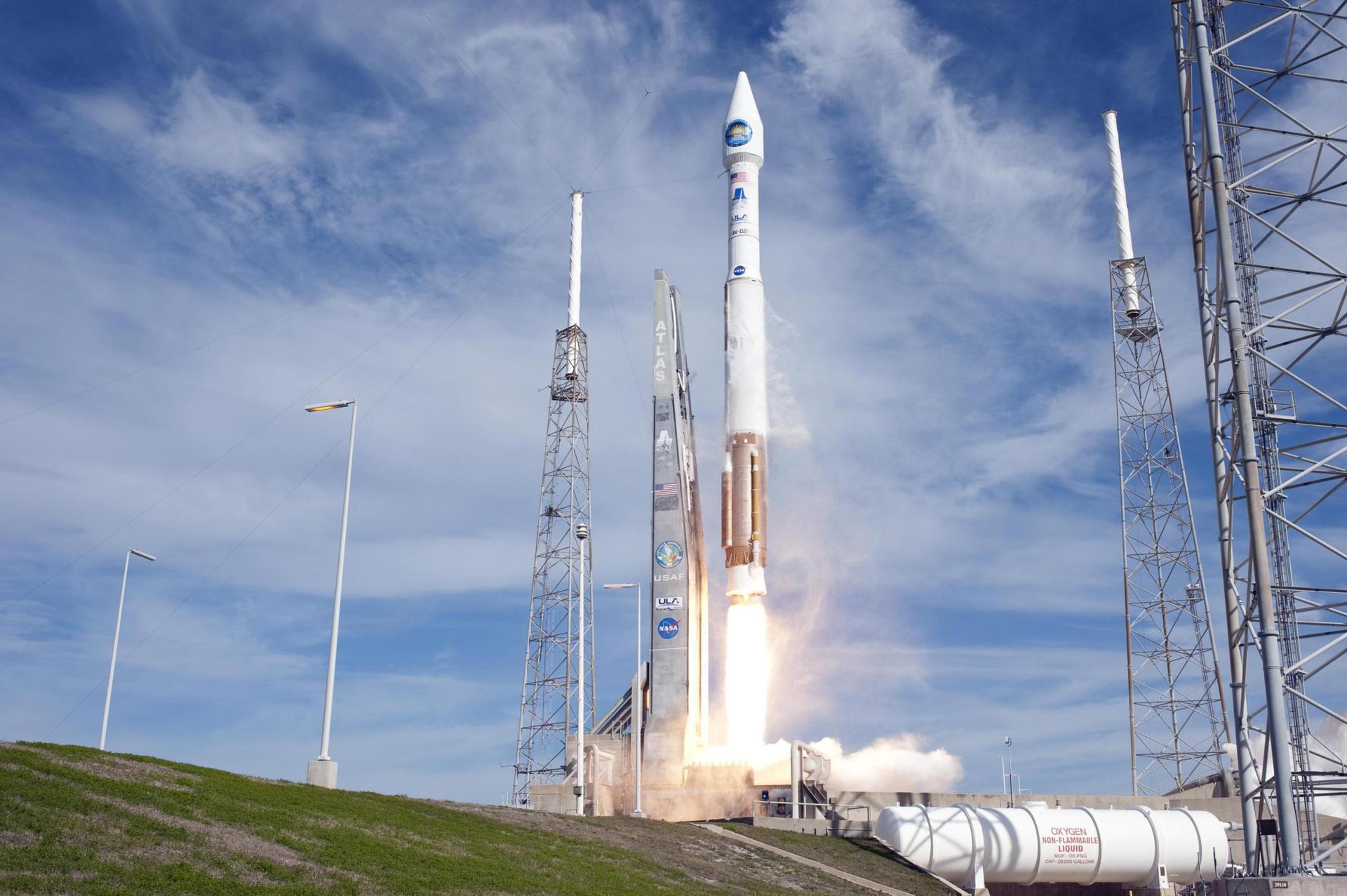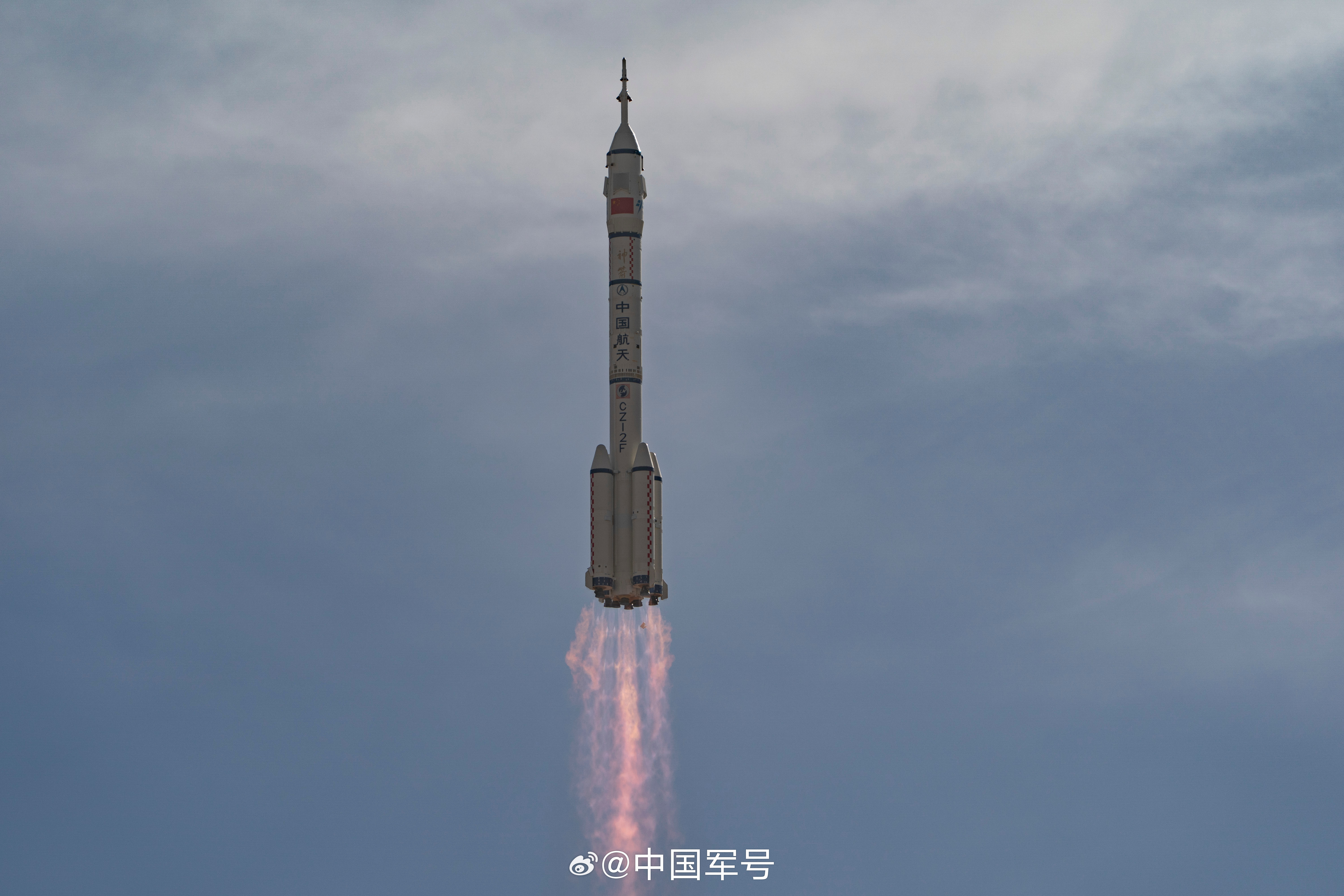Previous Spaceflight Launches
Filter by Agency, Locations or Vehicles
Show All LaunchesH-IIB 304 | Kounotori 3 (HTV-3)
Mitsubishi Heavy Industries | JapanTanegashima Space Center, Japan
July 21, 2012, 2:06 a.m.
SpaceShipTwo | VSS Enterprise GF19
Virgin Galactic | United States of AmericaAir launch to Suborbital flight
July 18, 2012, noon
Soyuz FG | Soyuz TMA-05M
Progress Rocket Space Center | RussiaBaikonur Cosmodrome, Republic of Kazakhstan
July 15, 2012, 2:40 a.m.
Status: Launch Successful
Mission:
Soyuz TMA-05M begins expedition 32 by carrying 3 astronauts and cosmonauts to the International Space Station. Russian Commander, cosmonaut Yuri Malenchenko alongside Flight Engineers, Sunita Williams (NASA) & Akihiko Hoshide (JAXA) will launch aboard the Soyuz spacecraft from the Baikonur Cosmodrome in Kazakhstan and then rendezvous with the station. It landed on 19 November 2012, 01:53:30 UTC
Low Earth OrbitProton-M / Briz-M Enhanced | SES-5
Khrunichev State Research and Production Space Center | RussiaBaikonur Cosmodrome, Republic of Kazakhstan
July 9, 2012, 6:38 p.m.
Ariane 5 ECA | Echostar XVII & MSG-3
ArianeGroup | FranceGuiana Space Centre, French Guiana
July 5, 2012, 9:36 p.m.
Status: Launch Successful
Mission:
Echostar XVII is an American high throughput geostationary communications satellite operated by EchoStar. It is positioned at 107.1 degrees West and provides internet. MSG-3 are spin stabelised and are geostationary meteorogical satellites.
Geostationary Transfer OrbitDelta IV Heavy | NROL-15 (Mentor) (USA-237)
United Launch Alliance | United States of AmericaCape Canaveral SFS, FL, USA
June 29, 2012, 1:15 p.m.
SpaceShipTwo | VSS Enterprise GF18
Virgin Galactic | United States of AmericaAir launch to Suborbital flight
June 29, 2012, noon
SpaceShipTwo | VSS Enterprise GF17
Virgin Galactic | United States of AmericaAir launch to Suborbital flight
June 26, 2012, noon
Atlas V 401 | NROL-38 (SDS) (USA-236)
United Launch Alliance | United States of AmericaCape Canaveral SFS, FL, USA
June 20, 2012, 12:28 p.m.
Long March 2F/G | Shenzhou-9 & Shenzhou-9-GC
China Aerospace Science and Technology Corporation | ChinaJiuquan Satellite Launch Center, People's Republic of China
June 16, 2012, 10:37 a.m.
Status: Launch Successful
Mission:
This is the fourth crewed mission for China's Shenzhou program which lasted 12 days. Being the first crewed spacecraft to visit the Tiangong-1 space station, it brought up the astronauts Jing Haipeng, Liu Wang and the first Chinese female astronaut Lie Yang. They docked automatically to the station on 18 June. During their stay in the station, astronauts conducted various scientific and technological experiments, and performed manual re-docking on 24 June. Shenzhou 9 undocked on 29 June and landed safely back on Earth the same day.
Low Earth Orbit